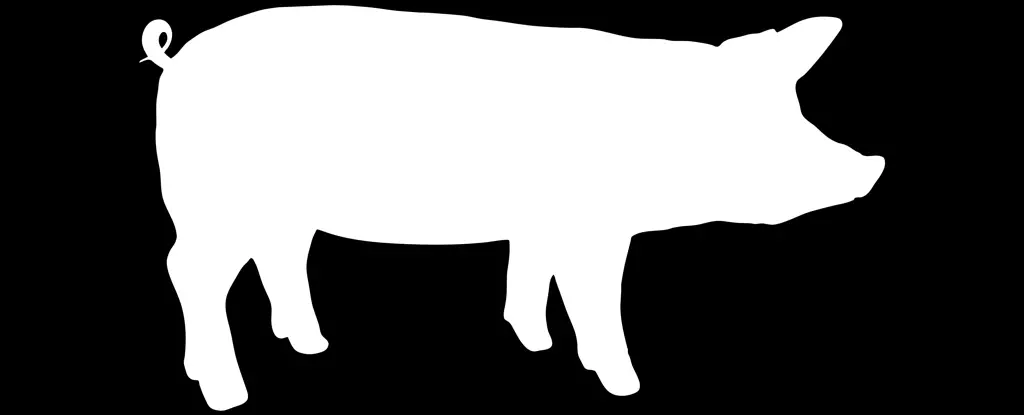In early 2024, the United States faced a significant public health concern when the Department of Agriculture reported a case of bird flu in a pig from a backyard farm in Oregon. This development is alarming given the broader context of the avian influenza virus, specifically the A/H5N1 strain, which has not only affected various bird populations but also crossed into livestock, including dairy cattle. The strain in question, clade 2.3.4.4b of A/H5N1, has shown a troubling propensity to infect a diverse range of animals and continues to pose challenges across nations, particularly in Europe and the U.S.
Furthermore, the impact of this strain is not merely an agricultural concern; it extends to food production systems. When poultry flocks become infected, culling is enacted to contain the outbreak. Dairy operations also face risks, as contamination raises concerns over the safety of milk products, although processes like pasteurization generally mitigate this risk.
Understanding the interaction between avian flu and human health involves recognizing how the virus typically operates within animal hosts. The virus primarily targets birds due to specific receptors in their respiratory systems. In contrast, human receptors differ significantly, leading to limited human-to-human transmission. Historically, human cases of A/H5N1 have been predominantly reported among individuals in direct contact with infected livestock, such as farm workers.
A worrying aspect of this scenario is the virus’s potential adaptability. For it to successfully leap from animals to humans on a broader scale, it is essential for the virus to undergo genetic mutations that enhance its affinity for human receptors. Current research indicates that certain mutations could facilitate this shift, increasing the likelihood of human transmission. Such adaptability alters the risk landscape and emphasizes the necessity for vigilant monitoring.
Pigs have emerged as a significant concern in the avian influenza transmission chain due to their dual receptor profiles, allowing for the simultaneous infection by both avian and human influenza viruses. This characteristic positions pigs as a possible nexus for genetic reassortment among flu strains, raising the stakes for pandemic development.
Interestingly, while pigs were formerly less vulnerable to A/H5N1 strains, recent mutations have enabled the virus to infect these animals more effectively. The case emerging in Oregon, where A/H5N1 was detected following a poultry outbreak on the same farm, highlights the risk of this virus infiltrating commercial settings. With winter approaching, a season known for a surge in human influenza cases, the intersection of these risks makes for a precarious situation.
To mitigate the evolving threat of avian flu, robust surveillance is paramount. Effective monitoring of animals, particularly birds and pigs, is vital for early detection of infections. Comprehensive testing and timely reporting can provide critical insights, aiding in the prevention of broader outbreaks. Farmers must be supported through financial measures to encourage the prompt reporting of infections.
At a global scale, influenza surveillance systems must be strengthened to identify unusual patterns in respiratory illnesses that could signal the onset of a human pandemic. Systems such as EPIWATCH can play a crucial role in providing early warnings, thereby facilitating prompt vaccine development where necessary.
The identification of potential pandemic strains must occur swiftly in the event of an outbreak. In Australia, a case of A/H5N1 infection was delayed in being classified due to insufficient subtyping of influenza A tests, leading to mathematical uncertainty about the virus’s nature. Such delays could become costly if a virulent strain capable of human transmission emerges under the guise of seasonal flu.
In light of these complexities, there is an urgent need for a lower threshold for influenza A subtyping. Rapid diagnostic tests capable of distinguishing between seasonal and pandemic strains must be prioritized in pandemic preparedness plans. The current guidance from the U.S. Centers for Disease Control and Prevention suggests that, while the overall public risk remains relatively low, the increasing incidence of A/H5N1 in pigs amps up the potential danger.
Despite the worrying trends, the world is better positioned to respond to an influenza pandemic than to other forms of infectious disease. With the genome of a pandemic strain readily sequenced, vaccines can be developed in a manner akin to that of seasonal flu vaccines. Moreover, certain countries, recognizing the elevated risks, are already acting to vaccinate high-risk populations, such as farm workers.
The landscape of avian influenza presents a complex interplay between animal health and human safety. The recent developments emphasize the necessity for enhanced surveillance, rapid response strategies, and robust public health measures to combat this evolving threat. As the situation unfolds, the vigilance of health authorities, coupled with informed public health policies, will be critical in addressing the potential pandemic risks posed by avian influenza.


Leave a Reply